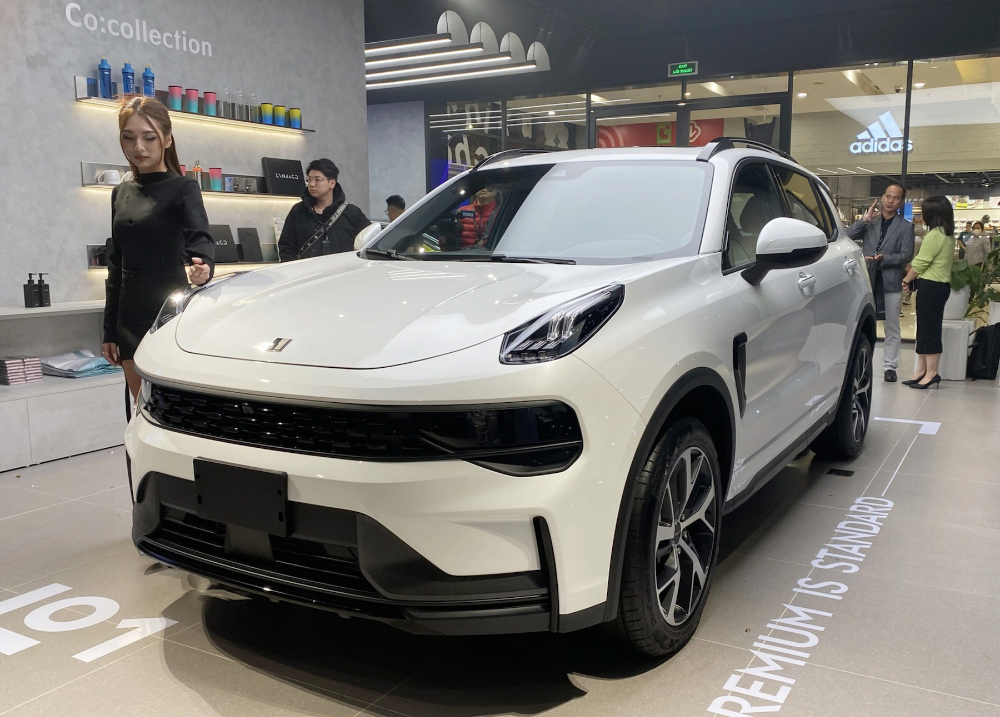
A sale agent specializing in distributing MG cars said MG7 2024, a D-class sedan model, is about to be introduced in the Vietnamese market with the selling price of over VND700 million. In Vietnam, it will directly compete with Toyota Camry, Kia K5, Mazda 6 and Honda Accord.
There are two versions of the sedan, using petrol-run turbocharged engine, equipped with smart cockpit system, advanced smart driving, and a 9-speaker BOSE Premium sound system. VND700 million is the lowest price of the models in the segment.
MG is an automobile brand belonging to SAIC Motor. The automobile manufacturer entered Vietnam in 2020 and MG’s cars are offered in all market segments, including B-class and C-class SUV, B-class and C-class sedan, and D-class sedan in the time to come.
MG’s car models always sell at the lowest price levels compared with other brands in the same segment. In some cases, they are even cheaper than products of lower market segments.
New MG 5, a C-class sedan, for example, has the selling price of VND399-499 million, just equal to an A-class car. MG HS, now selling at VND629-679 million, price equal to B-class SUVs of other brands, such as Hyundai Creta and Kia Setos.
Priced low to compete with A- and B-class products, the Chinese C-class product sales are not high. While the products have flashy appearance and hi-tech equipment, they are so cheap that make Vietnamese consumers doubt their quality, because low prices of Chinese products, in Vietnamese thoughts, mean low quality.
Also, the pricing strategies of Chinese manufacturers are believed to be unreasonable. Just several months after launching, they hurry to slash prices. And the sharper the price decrease, the more the products are unlikely to sell.
Many Vietnamese said they would rather buy used cars with Japanese and South Korean brands than buy Chinese low-cost brand new products.
Chinese cars too expensive for commonplace brands
While the majority of Chinese brands position themselves at low market segments, some other manufacturers set very high selling prices. Some products are even more expensive than Japanese and South Korean cars. Link & Co, a brand of Geely Group, is an example,
Lynk & Co entered the Vietnamese market with three high ground clearance car models, including 01, 05 and 09. Of these, Lynk & Co 01 is a C-class SUV, priced at VND999 million; Lynk & Co 05 is a C-class SUV-Coupe, VND 1.6 billion and Lynk & Co 09 is a D-class SUV segment, VND 2.2 billion.
Lynk & Co 1 is in the same group with familiar names such as Mazda CX-5, Ford Territory and Kia Sportage, but its selling prices are by far higher. Lynk & Co 09, which is put on the same group with Ford Explorer, Hyundai Palisade and Volkswagen Teramont, has selling prices lower than Ford Explorer and Volkswagen Teramont, but much higher than Hyundai Palisade, with price from VND1.469 billion.
Asked if they are willing to buy Chinese cars, most people shake their heads, saying they doubt Chinese technologies. Though Chinese cars have good appearance, well-designed interior decoration using high technologies and environmentally friendly engine, their high prices cannot attract Vietnamese buyers.
Those who have VND1 billion would rather buy a C-class SUV with Japanese, South Korean and American brands than a Chinese car, while those who have VND2.2 billion or more can own luxury models such as BMW and Audi, so they would not eye Chinese cars.
Positioning themselves in Vietnam is difficult for Chinese manufacturers. Some Chinese brands have had to slash prices just a short time after launch.
Haval H6 HEV, a C-class SUV, for example, was introduced in Vietnam in early August 2023 with the manufacturer’s suggested retail price of VND1.096 billion. However, as the high price could not attract buyers, the manufacturer slashed the price to VND850 million. However, the move affected Vietnamese confidence in Chinese products.
Unlike Japanese, South Korean and American brands, Chinese car brands do not publicize their monthly and yearly sales.
Hoang Hiep